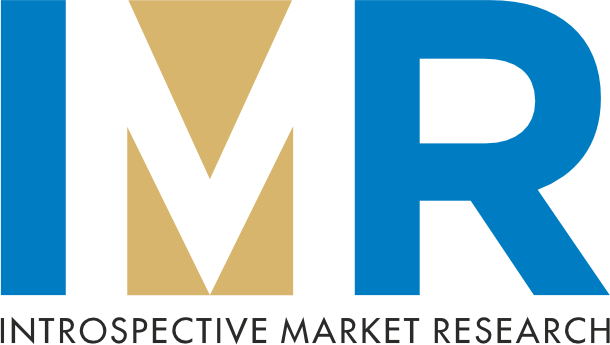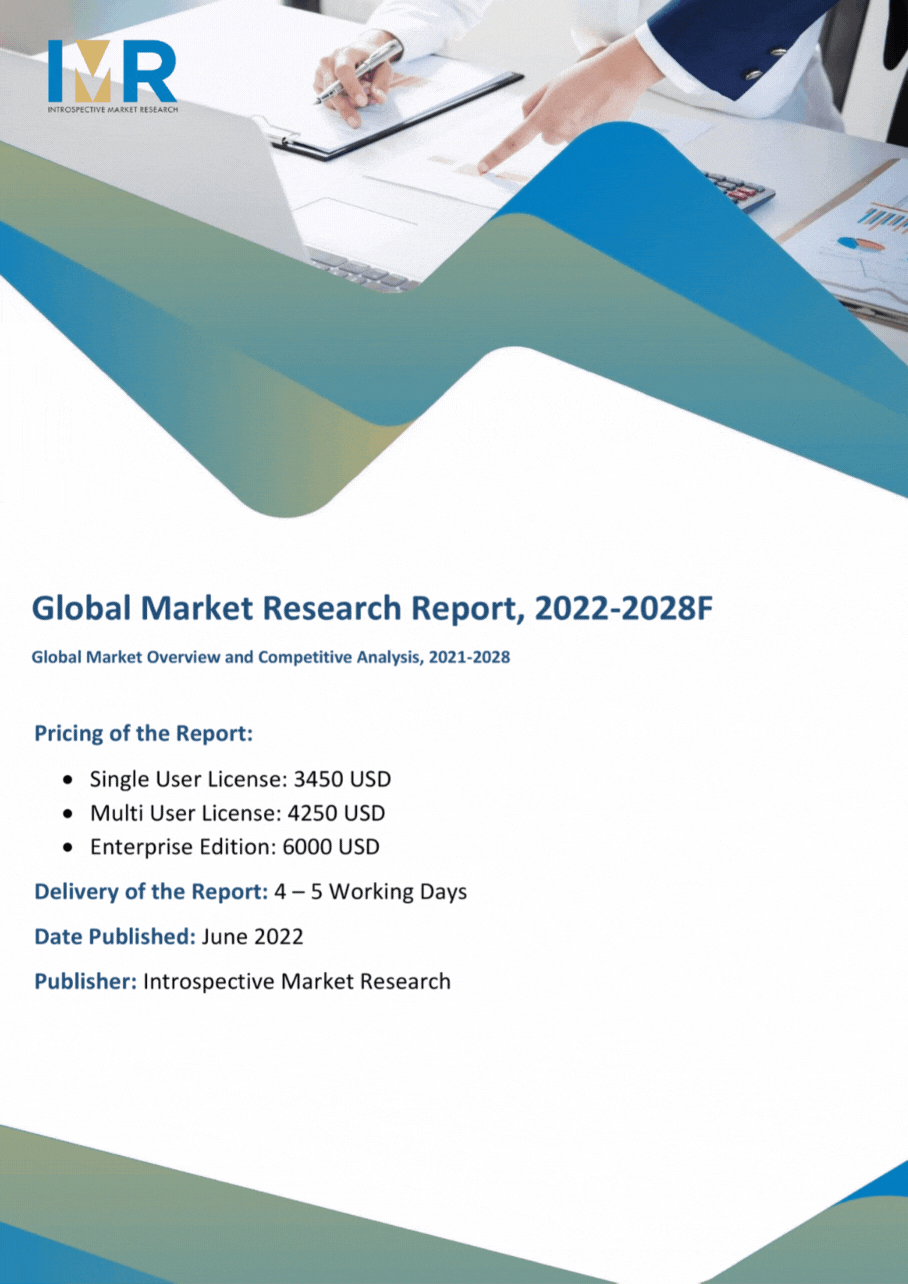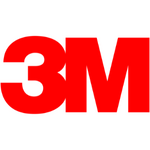Sulfur Market Synopsis
Sulfur Market Size Was Valued at USD 78.30 Billion in 2023, and is Projected to Reach USD 129.28 Billion by 2032, Growing at a CAGR of 5.73% From 2024-2032.
Sulfur is one of the elements in the periodic table and it has a symbol S and atomic number is 16. It is also present in forms such as; the free state, as in elemental sulfur, combined as sulfides and as sulfates and sulfites. Sulfur is involved in some vital activities in the body as it is an obvious component of amino acids the likes of cysteine and methionine which are vital for the formation of proteins. This is also applied extensively in several industries like sulphuric acid manufacturing, fertilisers and rubber goods in vulcanisation. Sulfur compounds are involved in environmental processes like the sulfur cycling and may thus be beneficial or have adverse effects depending of the ecosystem and the concentration level.
- Sulfur Market is one of the most important markets in the present global market and it is actively used in agriculture, chemicals and energy industry. Sulfur is one of the non-metallic elements that is majorly marketed as sulfuric acid which is a raw material in processes such as the processing of fertilizer, extraction of metals and refining of petroleum.
- In agriculture sulfur is essential in the growth and development of plants. It is used in manufacturing of foods, specifically, it plays an important role of synthesizing amino and vitamins in plants, which in turn boosts the output and quality of crops. Sulphur containing fertilizers are used to remedy the lack of sulphur in soils and work effectively responding to the lack of productivity in various agricultural fields which is especially typical for territories with low natural content of sulphur in the ground.
- Moreover, sulfone obtained from the compound elemental sulfur is used in production of phosphoric acid used to produce phosphate fertilizers. This connection emphasises how sulfur has a rather extensive, albeit an indirect, influence on worldwide food manufacture and agriculture sustainability. With an increase in population, the need for food production is always on the rise and thus brings the role of sulfur in the production of food crops into focus.
- Apart from application in agriculture, sulfur has many uses in several industrial categories, including the chemical industries. Holding its position as one of the leading substances used in industries all over the world, sulfuric acid acts as a catalyst in a number of chemical reactions besides being one of the primary building blocks of an array of industrial chemicals, which includes detergents, dyes, and medications. Its application can also be seen in metallurgy, a sulfiding that is crucial in the purification of metals for instance copper and zinc, hence, in the production of numerous metal products.
- The energy sector also uses sulfur notably in petroleum refining. Sulfur containing compounds in crude oils are undesirable and are usually eliminated through refining processes primarily to meet environmental requirements and churn out less emissive fuel. Sulphur removal or the separation of sulphur from crude oil protects the quality of fuel and prevents the negative effects that come with the emission of fumes from burnt engines hence supporting environmental conservation globally.
- Market of sulfur depends on industrial activities across the world, rules and regulation for emission control and usage of sulfur in agricultural sector. Thus, the prices of sulfur are subjected to volatility because of the supply and demand forces, political situations concerning production areas, and new technologies that define sulfur production and use. Thus, the role of the sulfur market is confidence as the industries evolve and develop in regard to environmental and economic conditions for a sustainable development of industries at the international level.

Sulfur Market Trend Analysis
Increasing Demand for Sulfur in AgriTech Application
- Sulfur has been seen to have a connection with nutritional solution for plants and pesticides, thus the call for use of sulfur in AgriTech has been noticed to be on the rise. Suffice to say, sulfur is an important nutrient in plant nutrition because it is used in the formation of proteins, enzymes and vitamin. Due to the high demand of sulfur for growth and yield, it is especially effective on crops such as legumes, brassicas, and onions. In addition to the nutritional value, sulfur is applied in the agricultural field mainly for being a fungicide and pesticides as part of the integrated pest management techniques which is relatively new compared to chemical pest control techniques but has definitively a more positive approach towards the environment.
- The greater consumer focus on Agricultural Technologies has acted as a benefit to sulfur as well, as the sector aims at the usage of earth-friendly practice in farming. The sulfur market is also boosted by challenges in formulation technologies to improve the performance and safety for agricultural applications and pass the most rigid regulatory and safety checks to provide maximum protection to crops and nutritional value.
Industrial Applications in Chemicals and Pharmaceuticals
- Sulphur market about which is very vital in a number of processes that are used today in industries of chemicals and in the production of pharmaceuticals. Sulfur in chemicals; most of the sulfur is processed into sulfuric acid necessary in the production of fertilizers, batteries, and chemical processes. It is also used in the coking of rubber that increases its strength and elasticity that make it a primary ingredient in tire production and other rubber related products.
- Also, sulfides such as sulfur dioxide are used widely in water treatment and as food preservatives. Sulfur compounds are used in the preparation of antibiotics: the sulfonamides, and in the manufacture of other pharmaceutical chemicals. The need for sulfur in such industries depends on agriculture, industrial manufacturing, and the restrictive environmental laws globally affecting the shelf life of sulfur, costs and operations of incorporating sulfur distinctively in different industrial sectors.
Sulfur Market Segment Analysis:
Sulfur Market Segmented based on Form, Technology and End User Industry .
By From , Liquid segment is expected to dominate the market during the forecast period
- The global demand can be divided in its forms; primarily it can be divided into the solid and liquid market. The common form of solid sulfur is sulfur granules or sulfur flakes which is used in industries to produce sulfuric acid, rubber industry for vulcanization of rubber and in agriculture as a soil sulfur supplement. Solid sulfur is preferred in several processes in industries mainly due to its handling and storage characteristics. On the other hand, liquid sulfur particularly sulfuric acid is essential in chemical industries, battery making industries as well as for catalysis of many chemical reactions.
- The market trends of solid sulfur depend on the necessity for its use in various areas of activity; changes in industrial production and agricultural requirements contribute to the variations. Sulfur particularly in its liquid state like Sulfuric acid is inclined to industrial production changes, and environmental policies. In general, the analysis of the suggested forms makes it possible to identify the tendencies in product usage and estimate the supply and demand balance within the S industry.
By Technology , Granules segment held the largest share in 2023
- Studying the market of sulfur, one have to mention the major technologies existing in it, such as granule, pastill, and prilling technologies. Tablets are usually preferred due to their characteristics during handling and application; the granules are widely used in agriculture for treatment of soil and as an active ingredient in the manufacture of fertilizers. Pastilles, which are naturally cylindrical and very regular in shape and size, are ideal to be used in industrial processes where the dosage is most likely to be precise and release uniform or when dissolved in some chemical processes like the making of sulfuric acid.
- Another important technology is prilling in which spherical bead formation is done through liquid sulfur spraying and cooling. The advantage of this method is that sulfur that is produced is of high purity and density to suit many uses such as in the production of pharmaceuticals and vulcanisation of rubber. Thus, each type of technology meets certain market requirements and provides certain value characteristics in terms of productivity, product quality, and the range of possible uses in the context of the market for sulfur products.
Sulfur Market Regional Insights:
Asia Pacific is Expected to Dominate the Market Over the Forecast period
- The sulfur market is expected to show a high growth profile in the forecast period; the Asia Pacific leads this market. These increases can be mainly due to the increasing scale of industrialization specifically in Asia, especially in countries like China and India where sulfur has numerous applications in chemical production, fertilizers as well as in pharmaceutical products. Also, factors, such as the growth in agriculture scenario in the region along with the increasing use of sulfur containing fertilizers, are fueling the market growth.
- Moreover, incumbent legal requirements on industries regarding the use of sulfur for emission control systems are driving the market. Middle East and North America region for instance are also expected to significantly contribute to the market growth on account of the fact that they are heavily involved in oil refining and natural gas processing industries where sulfur is produced as a byproduct. All in all, it is expected that the sulfur market enjoys a good prospect due to its applicability in numerous industries as well as the requirement of environmental protection.
Active Key Players in the Sulfur Market
- Saudi Aramco - Saudi Arabia
- Abu Dhabi National Oil Company (ADNOC) -UAE
- ExxonMobil - US
- Shell - Netherlands (Royal Dutch Shell)
- Chevron - US
- BP - UK
- Gazprom - Russia
- TotalEnergies - France
- Rosneft - Russia
- Sinopec - China
- Others Key Player
Key Industry Developments in the Sulfur Market
- In January 2023, Technip Energies was awarded a contract for the modernization of sulfur recovery equipment at Aramco's Riyadh Refinery as part of its long-term agreement with Aramco. In order to comply with stricter emission regulations for sulfur dioxide and to improve the performance of the existing three sulfur recovery units SRU, this contract covers the installation of three new tail gas treatment units TGT, with a recovery efficiency of more than 99.9%.
- In April 2023. Valero Energy Corp (VLO.N) initiated the manufacturing on a new coker at its 335,000-barrel-per-day (bpd) Port Arthur, Texas, refinery. The restart of production of the new 55,000bpd coker follows the completion of the overhaul of the 115,000-bpd AVU-147 crude distillation unit. The unit uses hydrogen to remove sulfur from gas oil, gasoline and diesel feedstocks
Sulfur Market Scope:
|
Global Sulfur Market |
|||
|
Base Year: |
2023 |
Forecast Period: |
2024-2032 |
|
Historical Data: |
2017 to 2023 |
Market Size in 2023: |
USD 78.30 Bn. |
|
Forecast Period 2024-32 CAGR: |
5.73% |
Market Size in 2032: |
USD 129.28 Bn. |
|
Segments Covered: |
By Form |
|
|
|
By Technology |
|
||
|
By End User Industry |
|
||
|
By Region |
|
||
|
Key Market Drivers: |
|
||
|
Key Market Restraints: |
|
||
|
Key Opportunities: |
|
||
|
Companies Covered in the report: |
|
||
Chapter 1: Introduction
1.1 Scope and Coverage
Chapter 2:Executive Summary
Chapter 3: Market Landscape
3.1 Market Dynamics
3.1.1 Drivers
3.1.2 Restraints
3.1.3 Opportunities
3.1.4 Challenges
3.2 Market Trend Analysis
3.3 PESTLE Analysis
3.4 Porter's Five Forces Analysis
3.5 Industry Value Chain Analysis
3.6 Ecosystem
3.7 Regulatory Landscape
3.8 Price Trend Analysis
3.9 Patent Analysis
3.10 Technology Evolution
3.11 Investment Pockets
3.12 Import-Export Analysis
Chapter 4: Sulfur Market by Form
4.1 Sulfur Market Snapshot and Growth Engine
4.2 Sulfur Market Overview
4.3 Solid
4.3.1 Introduction and Market Overview
4.3.2 Historic and Forecasted Market Size in Value USD and Volume Units (2017-2032F)
4.3.3 Key Market Trends, Growth Factors and Opportunities
4.3.4 Solid: Geographic Segmentation Analysis
4.4 Liquid
4.4.1 Introduction and Market Overview
4.4.2 Historic and Forecasted Market Size in Value USD and Volume Units (2017-2032F)
4.4.3 Key Market Trends, Growth Factors and Opportunities
4.4.4 Liquid: Geographic Segmentation Analysis
Chapter 5: Sulfur Market by Technology
5.1 Sulfur Market Snapshot and Growth Engine
5.2 Sulfur Market Overview
5.3 Granules
5.3.1 Introduction and Market Overview
5.3.2 Historic and Forecasted Market Size in Value USD and Volume Units (2017-2032F)
5.3.3 Key Market Trends, Growth Factors and Opportunities
5.3.4 Granules: Geographic Segmentation Analysis
5.4 Pastilles
5.4.1 Introduction and Market Overview
5.4.2 Historic and Forecasted Market Size in Value USD and Volume Units (2017-2032F)
5.4.3 Key Market Trends, Growth Factors and Opportunities
5.4.4 Pastilles: Geographic Segmentation Analysis
5.5 Prilling
5.5.1 Introduction and Market Overview
5.5.2 Historic and Forecasted Market Size in Value USD and Volume Units (2017-2032F)
5.5.3 Key Market Trends, Growth Factors and Opportunities
5.5.4 Prilling: Geographic Segmentation Analysis
Chapter 6: Sulfur Market by End-user Industry
6.1 Sulfur Market Snapshot and Growth Engine
6.2 Sulfur Market Overview
6.3 Fertilizer
6.3.1 Introduction and Market Overview
6.3.2 Historic and Forecasted Market Size in Value USD and Volume Units (2017-2032F)
6.3.3 Key Market Trends, Growth Factors and Opportunities
6.3.4 Fertilizer: Geographic Segmentation Analysis
6.4 Chemical Processing
6.4.1 Introduction and Market Overview
6.4.2 Historic and Forecasted Market Size in Value USD and Volume Units (2017-2032F)
6.4.3 Key Market Trends, Growth Factors and Opportunities
6.4.4 Chemical Processing: Geographic Segmentation Analysis
6.5 Metal Manufacturing
6.5.1 Introduction and Market Overview
6.5.2 Historic and Forecasted Market Size in Value USD and Volume Units (2017-2032F)
6.5.3 Key Market Trends, Growth Factors and Opportunities
6.5.4 Metal Manufacturing: Geographic Segmentation Analysis
6.6 Rubber Processing
6.6.1 Introduction and Market Overview
6.6.2 Historic and Forecasted Market Size in Value USD and Volume Units (2017-2032F)
6.6.3 Key Market Trends, Growth Factors and Opportunities
6.6.4 Rubber Processing: Geographic Segmentation Analysis
6.7 Other
6.7.1 Introduction and Market Overview
6.7.2 Historic and Forecasted Market Size in Value USD and Volume Units (2017-2032F)
6.7.3 Key Market Trends, Growth Factors and Opportunities
6.7.4 Other: Geographic Segmentation Analysis
Chapter 7: Company Profiles and Competitive Analysis
7.1 Competitive Landscape
7.1.1 Competitive Benchmarking
7.1.2 Sulfur Market Share by Manufacturer (2023)
7.1.3 Industry BCG Matrix
7.1.4 Heat Map Analysis
7.1.5 Mergers and Acquisitions
7.2 SAUDI ARAMCO
7.2.1 Company Overview
7.2.2 Key Executives
7.2.3 Company Snapshot
7.2.4 Role of the Company in the Market
7.2.5 Sustainability and Social Responsibility
7.2.6 Operating Business Segments
7.2.7 Product Portfolio
7.2.8 Business Performance
7.2.9 Key Strategic Moves and Recent Developments
7.2.10 SWOT Analysis
7.3 ABU DHABI NATIONAL OIL COMPANY (ADNOC)
7.4 EXXONMOBIL
7.5 SHELL
7.6 CHEVRON
7.7 BP
7.8 GAZPROM
7.9 TOTALENERGIES
7.10 ROSNEFT
7.11 SINOPEC
7.12 OTHERS KEY PLAYER
Chapter 8: Global Sulfur Market By Region
8.1 Overview
8.2. North America Sulfur Market
8.2.1 Key Market Trends, Growth Factors and Opportunities
8.2.2 Top Key Companies
8.2.3 Historic and Forecasted Market Size by Segments
8.2.4 Historic and Forecasted Market Size By Form
8.2.4.1 Solid
8.2.4.2 Liquid
8.2.5 Historic and Forecasted Market Size By Technology
8.2.5.1 Granules
8.2.5.2 Pastilles
8.2.5.3 Prilling
8.2.6 Historic and Forecasted Market Size By End-user Industry
8.2.6.1 Fertilizer
8.2.6.2 Chemical Processing
8.2.6.3 Metal Manufacturing
8.2.6.4 Rubber Processing
8.2.6.5 Other
8.2.7 Historic and Forecast Market Size by Country
8.2.7.1 US
8.2.7.2 Canada
8.2.7.3 Mexico
8.3. Eastern Europe Sulfur Market
8.3.1 Key Market Trends, Growth Factors and Opportunities
8.3.2 Top Key Companies
8.3.3 Historic and Forecasted Market Size by Segments
8.3.4 Historic and Forecasted Market Size By Form
8.3.4.1 Solid
8.3.4.2 Liquid
8.3.5 Historic and Forecasted Market Size By Technology
8.3.5.1 Granules
8.3.5.2 Pastilles
8.3.5.3 Prilling
8.3.6 Historic and Forecasted Market Size By End-user Industry
8.3.6.1 Fertilizer
8.3.6.2 Chemical Processing
8.3.6.3 Metal Manufacturing
8.3.6.4 Rubber Processing
8.3.6.5 Other
8.3.7 Historic and Forecast Market Size by Country
8.3.7.1 Bulgaria
8.3.7.2 The Czech Republic
8.3.7.3 Hungary
8.3.7.4 Poland
8.3.7.5 Romania
8.3.7.6 Rest of Eastern Europe
8.4. Western Europe Sulfur Market
8.4.1 Key Market Trends, Growth Factors and Opportunities
8.4.2 Top Key Companies
8.4.3 Historic and Forecasted Market Size by Segments
8.4.4 Historic and Forecasted Market Size By Form
8.4.4.1 Solid
8.4.4.2 Liquid
8.4.5 Historic and Forecasted Market Size By Technology
8.4.5.1 Granules
8.4.5.2 Pastilles
8.4.5.3 Prilling
8.4.6 Historic and Forecasted Market Size By End-user Industry
8.4.6.1 Fertilizer
8.4.6.2 Chemical Processing
8.4.6.3 Metal Manufacturing
8.4.6.4 Rubber Processing
8.4.6.5 Other
8.4.7 Historic and Forecast Market Size by Country
8.4.7.1 Germany
8.4.7.2 UK
8.4.7.3 France
8.4.7.4 Netherlands
8.4.7.5 Italy
8.4.7.6 Russia
8.4.7.7 Spain
8.4.7.8 Rest of Western Europe
8.5. Asia Pacific Sulfur Market
8.5.1 Key Market Trends, Growth Factors and Opportunities
8.5.2 Top Key Companies
8.5.3 Historic and Forecasted Market Size by Segments
8.5.4 Historic and Forecasted Market Size By Form
8.5.4.1 Solid
8.5.4.2 Liquid
8.5.5 Historic and Forecasted Market Size By Technology
8.5.5.1 Granules
8.5.5.2 Pastilles
8.5.5.3 Prilling
8.5.6 Historic and Forecasted Market Size By End-user Industry
8.5.6.1 Fertilizer
8.5.6.2 Chemical Processing
8.5.6.3 Metal Manufacturing
8.5.6.4 Rubber Processing
8.5.6.5 Other
8.5.7 Historic and Forecast Market Size by Country
8.5.7.1 China
8.5.7.2 India
8.5.7.3 Japan
8.5.7.4 South Korea
8.5.7.5 Malaysia
8.5.7.6 Thailand
8.5.7.7 Vietnam
8.5.7.8 The Philippines
8.5.7.9 Australia
8.5.7.10 New Zealand
8.5.7.11 Rest of APAC
8.6. Middle East & Africa Sulfur Market
8.6.1 Key Market Trends, Growth Factors and Opportunities
8.6.2 Top Key Companies
8.6.3 Historic and Forecasted Market Size by Segments
8.6.4 Historic and Forecasted Market Size By Form
8.6.4.1 Solid
8.6.4.2 Liquid
8.6.5 Historic and Forecasted Market Size By Technology
8.6.5.1 Granules
8.6.5.2 Pastilles
8.6.5.3 Prilling
8.6.6 Historic and Forecasted Market Size By End-user Industry
8.6.6.1 Fertilizer
8.6.6.2 Chemical Processing
8.6.6.3 Metal Manufacturing
8.6.6.4 Rubber Processing
8.6.6.5 Other
8.6.7 Historic and Forecast Market Size by Country
8.6.7.1 Turkey
8.6.7.2 Bahrain
8.6.7.3 Kuwait
8.6.7.4 Saudi Arabia
8.6.7.5 Qatar
8.6.7.6 UAE
8.6.7.7 Israel
8.6.7.8 South Africa
8.7. South America Sulfur Market
8.7.1 Key Market Trends, Growth Factors and Opportunities
8.7.2 Top Key Companies
8.7.3 Historic and Forecasted Market Size by Segments
8.7.4 Historic and Forecasted Market Size By Form
8.7.4.1 Solid
8.7.4.2 Liquid
8.7.5 Historic and Forecasted Market Size By Technology
8.7.5.1 Granules
8.7.5.2 Pastilles
8.7.5.3 Prilling
8.7.6 Historic and Forecasted Market Size By End-user Industry
8.7.6.1 Fertilizer
8.7.6.2 Chemical Processing
8.7.6.3 Metal Manufacturing
8.7.6.4 Rubber Processing
8.7.6.5 Other
8.7.7 Historic and Forecast Market Size by Country
8.7.7.1 Brazil
8.7.7.2 Argentina
8.7.7.3 Rest of SA
Chapter 9 Analyst Viewpoint and Conclusion
9.1 Recommendations and Concluding Analysis
9.2 Potential Market Strategies
Chapter 10 Research Methodology
10.1 Research Process
10.2 Primary Research
10.3 Secondary Research
Sulfur Market Scope:
|
Global Sulfur Market |
|||
|
Base Year: |
2023 |
Forecast Period: |
2024-2032 |
|
Historical Data: |
2017 to 2023 |
Market Size in 2023: |
USD 78.30 Bn. |
|
Forecast Period 2024-32 CAGR: |
5.73% |
Market Size in 2032: |
USD 129.28 Bn. |
|
Segments Covered: |
By Form |
|
|
|
By Technology |
|
||
|
By End User Industry |
|
||
|
By Region |
|
||
|
Key Market Drivers: |
|
||
|
Key Market Restraints: |
|
||
|
Key Opportunities: |
|
||
|
Companies Covered in the report: |
|
||
Frequently Asked Questions :
The forecast period in the Sulfur Market research report is 2024-2032.
Saudi Aramco - Saudi Arabia, Abu Dhabi National Oil Company (ADNOC) -UAE, ExxonMobil – US, Shell - Netherlands (Royal Dutch Shell), Chevron – US, BP – UK, ,and Other Major Players.
The Sulfur Market is segmented into Form , Technology, End User Industry and Region. By Form , the market is categorized into Solid ,Liquid . By Technology , the market is categorized into Granules, Pastilles, Prilling. By End-user Industry , the market is categorized into Fertilizer, Chemical Processing, Metal Manufacturing, Rubber Processing, and Other. By region, it is analyzed across North America (U.S.; Canada; Mexico), Europe (Germany; U.K.; France; Italy; Russia; Spain, etc.), Asia-Pacific (China; India; Japan; Southeast Asia, etc.), South America (Brazil; Argentina, etc.), Middle East & Africa (Saudi Arabia; South Africa, etc.).
Sulfur is one of the elements in the periodic table and it has a symbol S and atomic number is 16. It is also present in forms such as; the free state, as in elemental sulfur, combined as sulfides and as sulfates and sulfites. Sulfur is involved in some vital activities in the body as it is an obvious component of amino acids the likes of cysteine and methionine which are vital for the formation of proteins. This is also applied extensively in several industries like sulphuric acid manufacturing, fertilisers and rubber goods in vulcanisation. Sulfur compounds are involved in environmental processes like the sulfur cycling and may thus be beneficial or have adverse effects depending of the ecosystem and the concentration level.
Sulfur Market Size Was Valued at USD 78.30 Billion in 2023, and is Projected to Reach USD 129.28 Billion by 2032, Growing at a CAGR of 5.73% From 2024-2032.


































